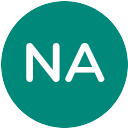A Comprehensive Guide to Alternative Sites Like Groovy
By Gregor K. published about 2022-12-29 07:39:33
Are you looking for websites similar to Groovy? If yes, then you've come to the right place! In this article, we’ve compiled a list of the best alternatives to Groovy. Whether you're looking for a similar website that offers more features or a completely different type of experience, this article has something for you. From web-based music streaming services to online art galleries, this list provides a comprehensive overview of the greatest Groovy alternatives available. So, let’s get started!
Groovy
Groovy is a powerful, dynamic and expressive programming language for the Java Platform. It can be used to create powerful web applications, desktop applications, and scripts that are both maintainable and easy to use.
Features
- Easy to learn and use
- Compatible with Java
- Strong static typing
- Flexible syntax
- Comprehensive API
- Built-in unit testing support
- Integration with existing Java frameworks and libraries
Groovy Alternatives
Bubble
Both platforms offer a no-code approach to creating website and apps.
Bubble has a more comprehensive library of features, such as database integration, user management, and third-party API integration.
Webflow
Both platforms offer a drag-and-drop interface for creating websites.
Webflow has a more extensive library of design elements, such as animations, interactions, and custom code integration.
WordPress
Both platforms offer a user-friendly interface for creating websites.
WordPress offers more options for customizing the look and feel of a website, including an extensive library of themes and plugins.
Squarespace
Both platforms offer a user-friendly interface for creating websites.
Squarespace is better suited for creating portfolio websites, while Groovy is better suited for creating web applications.
Wix
Both platforms offer a user-friendly interface for creating websites.
Wix offers more options for customizing the look and feel of a website, including an extensive library of templates and widgets.
Shopify
Both platforms offer a user-friendly interface for creating websites.
Shopify is better suited for creating eCommerce websites, while Groovy is better suited for creating web applications.
Drupal
Both platforms offer a user-friendly interface for creating websites.
Drupal is better suited for creating complex websites, while Groovy is better suited for creating web applications.
Push
Both Groovy and Push are websites designed to help users create their own music.
Groovy is a website that provides loops and samples, while Push provides a hardware instrument for creating music.
Java
Both Groovy and Java are programming languages.
Groovy is a modern, dynamic language while Java is a static language that emphasizes code stability over flexibility.
Size
Both websites offer online shopping services.
Groovy specializes in selling clothing, whereas Size specializes in selling shoes.
Plus
Both Groovy and Plus offer easy-to-use website building tools.
Groovy features drag and drop technology, while Plus requires users to manually code their websites.
Public
Both "Groovy" and "Public" are websites that allow users to share content with others.
"Groovy" is a social media platform where users can post, comment, and like content from other users, while "Public" is a website focused on creating communities of people with shared interests.
Wait
Both Groovy and Wait are websites that offer online services.
Groovy is an online music streaming platform while Wait is a waiting list management system.
Interface
Both websites feature graphic designs and tools for UI/UX development.
Groovy primarily focuses on web development, whereas Interface is focused on mobile app design.
Groovy Head-To-Head
Welcome to this head-to-head comparison of Groovy with other websites. Groovy is a powerful and versatile website building platform that offers users the ability to create unique and professional websites quickly and easily. We will be comparing Groovy to other popular website building solutions in order to determine which one best meets the needs of your business or project. We will explore the features and capabilities of each platform, as well as discuss their pros and cons. By the end of this article, you should be able to decide which website builder is best for you.
Groovy and Push are both websites with a variety of features that help users create, manage, and launch their own website or app. Groovy helps users to build a website from scratch with drag-and-drop tools, while Push provides an online platform for users to quickly design and deploy their own web applications. Both services offer comprehensive content management systems (CMS), hosting plans, and safety measures such as SSL encryption. Additionally, they both have user-friendly dashboards that allow users to customize the look of their site. Groovy also has several advanced features such as custom plugins and add-ons that can be used to enhance the functionality of the userâs site. On the other hand, Push offers an intuitive code editor that makes it easy for users to develop custom applications within the platform. Ultimately, each service provides a different set of features that can help users create a website or application tailored to their needs.
Groovy and Java are both popular programming languages used for web development. However, there are key differences between the two that should be considered when making a decision on which language to use. Groovy is a dynamic language that emphasizes productivity and readability of code, while Java is a static language with greater emphasis on performance and scalability. Groovy also offers an easier learning curve than Java due to its simplified syntax and static typing, making it ideal for quickly creating simple applications. In comparison, Java requires more time and effort to set up and write code given its detailed syntax and rules-based approach. When it comes to coding frameworks, Groovy offers Grails while Java has the Spring framework. Both frameworks enable users to create complex applications but Grails provides simpler parameters by using coding by convention which eliminates the need for tedious XML configuration files. Additionally, Grails automatically handles object/relational mapping (ORM) through GORM which abstracts away database access logic from the developer. In terms of performance, Groovy provides fast execution times as it compiles into bytecode at runtime whereas Java must be compiled before running the program resulting in slower execution times compared to Groovy. Meanwhile Java offers better scalability due to its ability to run on multiple platforms using virtual machines (JVM). This also makes it better suited for large-scale projects or applications as well as enterprise-level software development. In conclusion, both Groovy and Java offer unique features that make them suitable for different kinds of web development projects depending on the userâs preferences or requirements.
Groovy and Size are both cloud-based project management platforms designed to help users manage projects in an efficient manner. Groovy offers a wide range of features including task assignment, task tracking, timesheets, and analytics. It also has a built-in chat system that allows users to communicate with their team members. On the other hand, Size provides Gantt charts and Kanban boards for project visualization. It also has resource allocation tools to ensure optimal utilization of resources. Furthermore, it uses AI-powered forecasting capabilities to predict project outcomes and timelines in real time. Both platforms offer comprehensive reporting functions to track progress, giving users a better understanding of how their projects are progressing.
Groovy and Plus are two popular website building platforms. Both offer a wide range of features that make website design and development easy. Groovy is known for its drag-and-drop page editor which allows even novice users to create professional looking websites quickly and easily. On the other hand, Plus offers more advanced features such as an integrated shopping cart and ecommerce tools for those who want to monetize their website. Additionally, Groovy has a variety of pre-made themes available to customize your siteâs look, while Plus provides access to many third party apps with which you can extend the functionality of your website. Ultimately, both platforms provide ample options for creating beautiful, functional websites for businesses and individuals alike.
Groovy and Public are both customizable websites that offer features to help create an online presence for businesses. Groovy offers a wide selection of services such as web hosting, domain registration, website design, ecommerce solutions and more. Public provides similar services but with a focus on creating custom websites for small businesses. Both offer drag-and-drop page builders to make website creation easier for users. They also both provide access to a library of professionally designed themes. However, Groovy offers additional integrations with third-party applications like Mailchimp and Google Analytics while Public has more options for creating custom forms and blogging tools. Ultimately, both platforms are great options for businesses looking to create an online presence quickly and easily.
Groovy and Wait are both cloud-based customer service software solutions that offer a range of features to help manage customer experience. Groovy focuses on providing an AI-powered live chatbot, as well as automated support ticket management, and analytics. Wait offers a more comprehensive suite of features, including workflow automation and integration with messaging tools like Slack and Facebook Messenger. Both platforms have robust reporting capabilities that allow users to track customer feedback, identify areas for improvement, and optimize their services. While Groovy is more focused on providing AI-powered live chatbot solutions, Wait provides a wider range of features that make it ideal for businesses looking to streamline their customer support processes.
Groovy and Interface are both software products that provide robust solutions for digital collaboration and communication. Groovy allows users to connect with colleagues, customers, and partners through voice calls, video conferencing, and text messaging. It also features screen sharing, whiteboarding, and file sharing capabilities. Conversely, Interface empowers teams with a full suite of collaboration tools including project management, task tracking, document management, notifications and alerts, and analytics. Both solutions prioritize user security by offering end-to-end encryption as well as secure authentication protocols to ensure data is safe from unauthorized access. Additionally, both solutions offer mobile apps so users can stay connected on the go. However, Groovy has a few features that set it apart from Interface such as interactive polls & Q&A sessions while Interface offers a unique set of AI-based automation tools. Ultimately, each platform provides a powerful set of collaborative tools that can be tailored to fit any organizationâs needs.
Groovy and YouTube are both online platforms for sharing and viewing content, but their features differ in important ways. Groovy is a video conferencing tool that allows users to host meetings, webinars, and virtual events with up to 200 people. It includes features such as screen sharing, secure chat, breakout rooms, custom branding options, recording options, and more. YouTube is a streaming platform where users can watch videos uploaded by other users or upload their own videos. It has features such as subscription options, comment sections, the ability to like and dislike videos, playlists, live streaming capabilities, and more. Overall, Groovy is better suited for hosting meetings while YouTube offers more versatile streaming capabilities.
History of Groovy
Groovy is an open-source programming language that was first released in 2007. It originated from the Java platform and was designed to be a more concise and powerful language. Since then, it has been used in many applications and across many industries. It is now used for software development, testing, and more.
Groovy Status
The Groovy website on online and reachable (last checked on 2024-07-26 01:00:25).
Comments
-

-

-

-

-

-

I'm gonna need a bigger screen to check out all these groovy websites!
2024-03-17 13:20:12 · -

-

Further Links
Trending Sites
Top Sites in Dance
Groovy
Groovy is a powerful, dynamic and expressive programming language for the Java Platform. It can be used to create powerful web applications, desktop applications, and scripts that are both maintainable and easy to use.
Features
- Easy to learn and use
- Compatible with Java
- Strong static typing
- Flexible syntax
- Comprehensive API
- Built-in unit testing support
- Integration with existing Java frameworks and libraries
